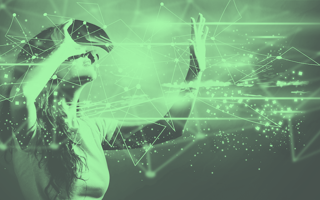They say that necessity is the mother of invention.
COVID-19 has taught us that lesson once again. During the current global health crisis, it has been crucial to rapidly innovate so that we can fulfill people’s needs and resolve issues quickly.
Technology’s role in this effort is undeniable. As we wait patiently for the COVID-19 vaccine, we’ve understood the need to stay safe and contactless, and we’ve found myriad innovative ways to continue working, learning and solving household needs.
- Education has changed dramatically with e-learning, with teaching taking place remotely on digital platforms.
- Online shopping has become the predominant way of buying essentials.
- Contactless digital transactions are the need of the hour.
- Virtual meetings are the new normal for ensuring business continuity.
Speed of recovery from any crisis is a crucial factor for business survival. So how can tech-driven innovation help us accelerate the revival and make post-COVID life seamless? Here are four areas that are primed for a leap forward.
1. AR and VR for Education and Healthcare
Imagine learning history and geography by virtually exploring historical places, studying the various phenomena on Earth, and virtually touring foreign countries while staying at the comfort of your home.
This can engage our students better and help them fall in love with learning. Skillful integration of games and immersive elements has shown increased engagement and motivation toward learning — especially among younger students.
AR and VR additionally empower learners to explore and learn at their own pace. A recent article published by the World Economic Forum shows that the integration of information technology in education will be further accelerated, and online education will eventually become an integral component of school education.
Today, AR is being widely used in healthcare facilities for several applications such as vein visualization, surgical visualization and training. In addition to making medical subjects more accessible to students and residents, AR aids in surgery planning and treatment and helps explain complex medical situations to patients and their relatives.
2. AI-Enabled Platforms for Automated Work
Everyone is familiar with the virtual assistants Siri, Alexa, Cortana and more. The more AI solutions we develop, the better we’ll be able to focus on our core work and leave busy time-intensive rote tasks to the machines. By digitizing repetitive tasks, enterprises can cut costs and eliminate human errors, thereby improving efficiency leading to better results.
Outbreaks like the coronavirus will continue to be a threat for healthcare providers and public-health institutions. By harnessing big data and AI to predict and forecast epidemics, and source medical supplies, we can possibly mitigate the impact of such pandemics. AI can also help us in agriculture, retail, shopping, security and surveillance, sports analytics, manufacturing, inventory management, healthcare, logistics autonomous vehicles and more.
3. IoT and Wearable Devices for Biomedicine
Wearable tech devices like smartwatches help people accomplish their fitness resolutions and also allow them to receive rapid alerts about any sudden health issues or concerns. These tech gadgets are already part of our fashion statement and wearable tech will continue to be one of the most exciting businesses. Whether it’s via smartwatches, smart jewelry, smart glasses, smart clothes, implants in the user’s body or even tattoos on the skin, we are seeing changes in the way we wear and interact with technology.
That’s not to mention swallowable medical devices (like wireless camera pills for diagnosis and surgery) and brain-computer/mind-machine interfaces (that enable bidirectional information flow), all of which are on their way!
4. Blockchain Technology for the Real Estate Sector
While all other industries reap the fruits of advanced technology, the real estate sector is sure to follow. From blockchain to VR home tours, technology is reimagining the real estate industry for the better. Already, more than 70 percent of today’s buyers search for homes online.
Blockchain can also disrupt a related industry: banking. When it comes to huge financial transactions in the property sector and real estate sales, blockchain technology enables the parties involved to seamlessly and securely transact funds without the need for intermediaries like banks. Blockchain can bring in improved security, efficiency and transparency to real estate transactions.
Are We Ready for the Next Leap?
A global economic outlook report by PwC estimates that, by 2050, the world economy could more than double in size due to technology-driven improvements. Several ecosystem players are looking at innovative solutions to solve current problems, and achieving that level of innovation will require a willingness to fail and learn.
Businesses cannot function without constant communication and connections. Cross-sector collaboration will be essential if we hope to come back from the current crisis. By identifying the problem — or the opportunity, some might say — we can deploy our human imagination, unwavering determination, continuous testing and technological innovation to overcome and succeed.





